Air conditioners have become an indispensable part of our lives, especially in regions where scorching summers are the norm. While we often appreciate the cool breeze they provide, few of us delve into the intricacies of how these machines function.
Understanding the various parts of an air conditioner not only enhances our appreciation for the technology but also empowers us to maintain and troubleshoot these systems effectively.
In this article, we will explore the essential components that come together to create the refreshing comfort we enjoy during hot summer days.
Table of contents
What is an Air Conditioner?
An air conditioner, often abbreviated as AC or A/C, is a device designed to regulate and control the temperature, humidity, and overall air quality within a confined space. Primarily used to cool indoor environments, air conditioners are a staple in homes, offices, vehicles, and various other settings where maintaining a comfortable and controlled climate is essential.
The fundamental principle behind air conditioning is the transfer of heat from the indoor space to the outside, creating a cooler and more pleasant environment. The primary components involved in the air conditioning process include a refrigerant, a compressor, condenser coils, evaporator coils, and an expansion valve.
These components work together to facilitate the continuous cycle of compressing and expanding a refrigerant, absorbing and releasing heat, ultimately leading to the cooling of the indoor air.
Types of Air Conditioner
Air conditioners come in various types to cater to different needs and settings:
Window Air Conditioners
- Typically installed in a window or a specially designed opening in a wall.
- Compact units containing all the necessary components in a single casing.
Split System Air Conditioners
- Comprises both indoor and outdoor units.
- The indoor unit contains the evaporator coils and a fan, while the outdoor unit houses the compressor and condenser coils.
Central Air Conditioning Systems
- Commonly used in larger buildings and homes.
- Distributes cooled air through a system of ducts using a centralized unit, which includes the compressor, condenser, and evaporator.
Portable Air Conditioners
- Mobile units on wheels that can be moved to different rooms.
- Extract heat from indoor air and expel it through a hose that vents to the outside.
Ductless Mini-Split Systems
- Similar to split systems but without the need for ductwork.
- Ideal for spaces where installing ducts is impractical.
Read Also: How To Fix A Wobbly Ceiling Fan | Easy Non-Expert Guide
Parts of an Air Conditioner
An air conditioner consists of several essential components that collaborate to control the temperature and humidity within a building or vehicle. These integral parts operate synergistically to establish an efficient and effective cooling system.
The primary components of an air conditioner include:
#1. Refrigerant
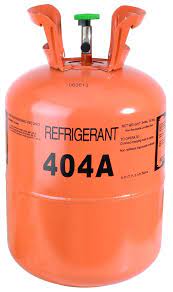
At the heart of every air conditioner lies the refrigerant, a unique fluid tasked with the absorption and release of heat. Widely used refrigerants, such as R-410A and R-22, play a pivotal role in a perpetual cycle of compression and expansion.
This cycle involves a fluid transition between liquid and gas states, facilitating the seamless transfer of heat. The refrigerant’s ability to undergo these transformations lies at the core of the air conditioning process, ensuring the efficient regulation of temperature.
#2. Compressor
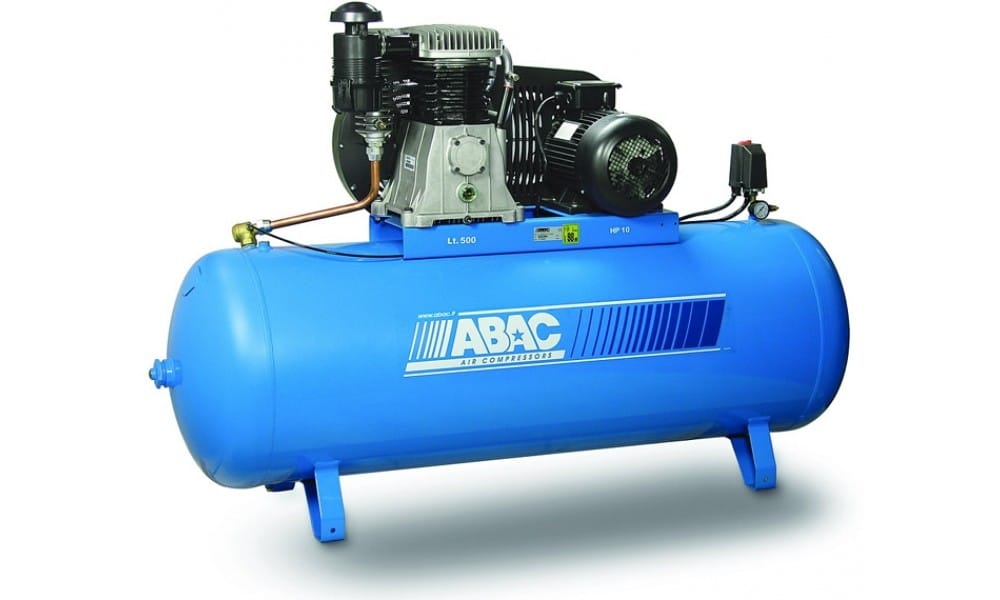
Functioning as the air conditioner’s primary pump, the compressor plays an important role in the refrigeration cycle. Its fundamental task involves compressing the refrigerant vapor, which starts as a low-pressure and low-temperature substance.
Through this compression, the vapor undergoes a transformative shift into a high-pressure and high-temperature gas.
This crucial process ensures the maintenance of a steady and continuous flow of refrigerant throughout the entire system, contributing significantly to the air conditioner’s overall efficiency.
#3. Condenser

Situated within the outdoor unit of the air conditioner, the condenser serves the crucial function of dispersing the heat absorbed by the refrigerant. As the elevated-pressure gas enters the coils of the condenser, it expels heat into the surrounding environment, undergoing a transformative process into a high-pressure liquid.
This change in phase enables the refrigerant to discharge the heat initially absorbed from the interior of the building. The condenser’s role in heat dissipation is integral to the overall efficiency of the air conditioning system.
#4. Expansion Valve
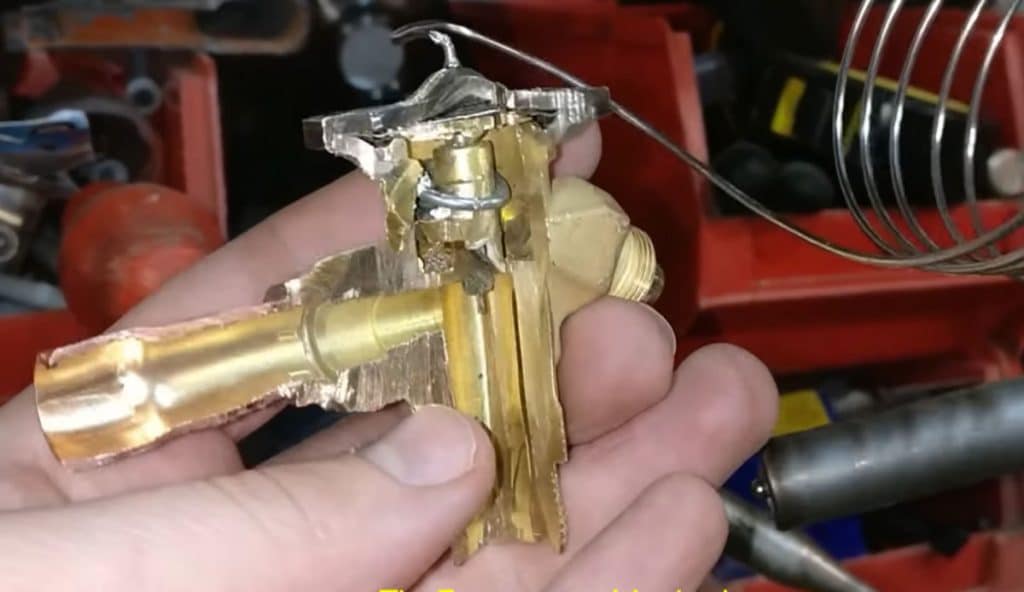
The expansion valve, commonly positioned close to the evaporator coils within the indoor unit, plays an important role in regulating the refrigerant’s passage into the evaporator.
Through inducing a pressure reduction, the expansion valve plays a pivotal role in guiding the refrigerant’s transformation from a high-pressure liquid to a low-pressure liquid.
This orchestrated process not only ensures the efficient cooling of the system but also contributes to the overall effectiveness of the air conditioning unit.
#5. Evaporator
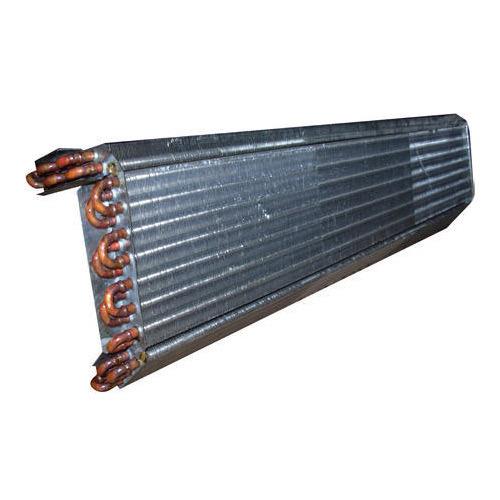
Central to the heat exchange mechanism is the pivotal function of the evaporator coils. When the low-pressure liquid refrigerant enters these coils, they serve as the site for heat absorption from the indoor air.
This absorption prompts the refrigerant to undergo a transformation into a low-pressure gas through evaporation. Subsequently, the cooled air resulting from this process is systematically circulated back into the living space, delivering the sought-after cooling effect.
Read ALSO: How To Install Weatherstripping Doors: Tips And Guidelines
#6. Air Filter
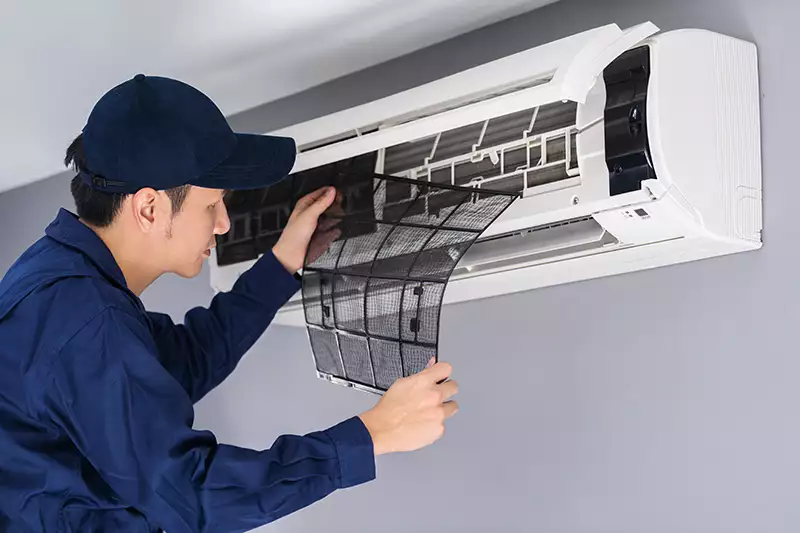
A frequently underestimated yet crucial element, the air filter plays a pivotal role in preserving indoor air quality by capturing dust, dirt, and various particles.
Consistent maintenance, either through regular cleaning or timely replacement, proves indispensable in guaranteeing both optimal airflow and the overall efficiency of the system.
This proactive approach ensures that the air filter continues to fulfill its vital function in maintaining a healthy and efficient indoor environment.
#7. Thermostat

Functioning as the command hub, the thermostat empowers users to establish and manage their preferred temperature settings.
Contemporary thermostats are equipped with programmable functionalities, giving you the ability to tailor cooling schedules to their preferences, thereby enhancing energy efficiency.
This advanced feature allows for a more personalized and energy-conscious approach to temperature regulation.
How Does the Air Conditioner Work?
The functioning of an air conditioner involves a complex but efficient process known as the refrigeration cycle. This cycle enables the air conditioner to remove heat from the indoor environment, providing a cooler and more comfortable atmosphere.
Here’s a step-by-step breakdown of how an air conditioner works:
- Refrigerant Circulation: The process begins with a refrigerant, a special fluid with a low boiling point, typically circulating through a closed loop within the air conditioning system.
- Compression: The refrigerant, initially in a low-pressure, low-temperature gaseous state, enters the compressor, which is typically in the outdoor unit of the air conditioner.
- Condensation: As outdoor air passes over these coils, the refrigerant releases heat to the surroundings, causing it to condense into a high-pressure liquid.
- Expansion Valve: The expansion valve reduces the pressure of the refrigerant, causing it to undergo a rapid expansion. This transition results in a low-pressure liquid with a significantly lower temperature.
- Evaporation: The low-pressure liquid enters the evaporator coils inside the indoor unit. As a fan blows indoor air over these coils, the refrigerant absorbs heat from the indoor air, causing it to evaporate into a low-pressure gas.
- Cooling Effect: Absorbing heat from indoor air during evaporation creates a cooling effect. This cooled air is then blown into the living space, providing the desired cooling.
- Return to Compressor: The low-pressure gas returns to the compressor to restart the refrigeration cycle.
Common Problems With Air Conditioner Parts
Air conditioners, like any complex machinery, can encounter various issues over time. Identifying common problems with different parts of an air conditioner is crucial for timely maintenance and repair.
Here are some frequent issues associated with specific components:
- Dirty or Clogged Air Filters: Reduced airflow, decreased efficiency, and potential system freeze-up.
- Refrigerant Leaks: Inadequate cooling, increased energy consumption, and potential compressor damage.
- Faulty Compressor: Insufficient cooling, strange noises, and frequent system shutdowns.
- Condenser Coil Issues: Reduced heat dissipation, leading to inefficient cooling and increased energy consumption.
- Frozen Evaporator Coils: Restricted airflow, insufficient cooling, and potential system shutdown.
- Thermostat Malfunctions: Inaccurate temperature readings, erratic cooling cycles, or unresponsive controls.
- Electrical Issues: System failure, intermittent operation, or electrical component damage.
- Leaky Ducts: Reduced cooling efficiency, uneven temperature distribution, and increased energy consumption.
- Dirty or Blocked Drainage: Water leaks, mold growth, and potential damage to the system.
Related: How Does a Halogen Light Bulb Work?
How to Fix Common Problems with Air Conditioner Parts
Addressing common problems with air conditioner parts often involves a combination of troubleshooting and, in some cases, professional help.
Here are general guidelines for fixing common issues with different air conditioner components:
- Dirty or Clogged Air Filters: Clean or replace the air filter regularly, typically every 1-3 months, to ensure proper airflow and system efficiency.
- Refrigerant Leaks: Consult with a professional HVAC technician to locate and repair leaks. Refrigerant recharge may also be necessary.
- Faulty Compressor: Replace the compressor. This task requires professional expertise and should be handled by a licensed technician.
- Condenser Coil Issues: Clean the condenser coils regularly, removing dirt and debris. Professional maintenance may be required for more extensive cleaning.
- Frozen Evaporator Coils: Identify and address the root cause, such as dirty filters or low refrigerant levels. Allow the coils to thaw, and ensure proper airflow.
- Thermostat Malfunctions: Recalibrate or replace the thermostat if it’s providing inaccurate readings. Ensure proper placement away from heat sources.
- Electrical Issues: Consult with a professional technician to identify and rectify wiring or electrical component problems.
- Fan Problems: Repair or replace faulty fans, capacitors, or motors to restore proper airflow. Professional assistance may be necessary.
- Leaky Ducts: Inspect and seal ducts to prevent air leaks. Professional HVAC technicians can identify and address issues with the ductwork.
- Dirty or Blocked Drainage: Regularly clean drain lines and pans to prevent blockages. Ensure proper drainage to avoid water leaks and potential damage.
Frequently Asked Questions
Adequate refrigerant levels are essential for the efficient heat exchange process. Low refrigerant levels can lead to decreased cooling capacity and potential damage to the compressor.
Air filters should generally be cleaned or replaced every 1-3 months, depending on usage and the type of filter. Regular maintenance ensures optimal system performance.
Ensure fans, capacitors, and motors are in good condition. Clean or replace filters regularly, and make sure there are no obstructions hindering airflow.
Conclusion
Understanding the various components of an air conditioner sheds light on the sophisticated engineering that goes into creating a comfortable indoor environment. Regular maintenance, such as cleaning filters and checking refrigerant levels, can extend the lifespan of your air conditioner and ensure it operates at peak efficiency.
References
- Iernaair.com – AIR CONDITIONER PARTS AND FUNCTIONS
- Guardianexperts.com – MAIN PARTS OF YOUR AC SYSTEM
- Home.howstuffworks.com – How Air Conditioners Work





